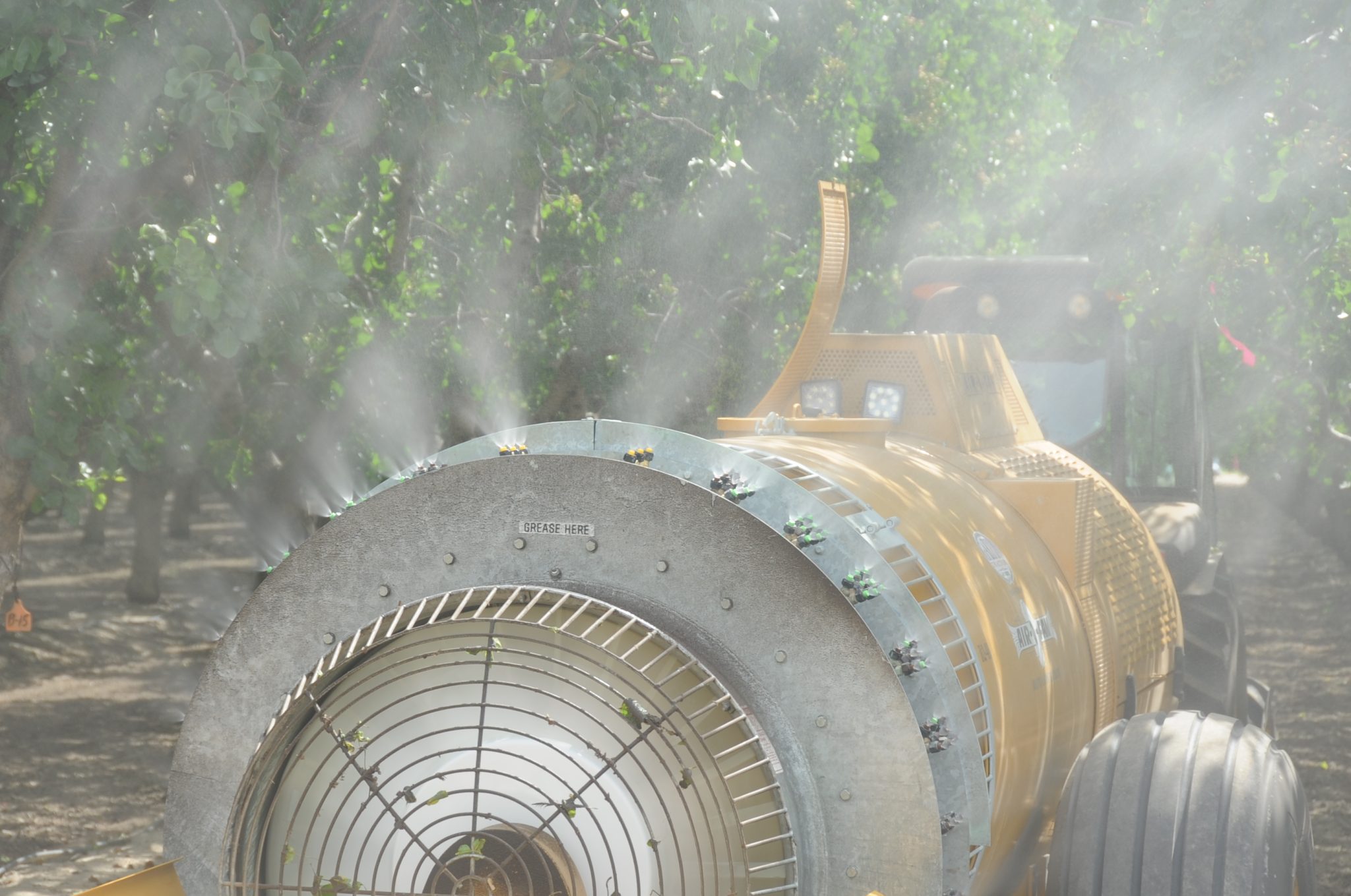UCCE Farm Advisor Franz Niederholzer, speaking at the 2022 California Walnut Conference, noted that in the face of higher production costs and tighter markets, walnut growers need to focus on careful use of existing farming practices and new technologies to set them up for the best possible crop outcomes.
“As margins get tighter, small improvements, while maintaining quality, matter,” he said.
Spray innovation in field applications has moved at a faster pace than orchard spraying, in part, Niederholzer said, because margins are so thin.
Sensor-triggered air blast sprayers have been around for decades. New-generation sensor triggered sprayer Smart Apply comes as an aftermarket kit, not a single source package. Additional technology, including flow controllers, flow meters and tracking/flow adjusting, exist to help deliver the recommended doses. Operators still need to know what sprayers need to do and how to calibrate, he said.
Niederholzer said there are three key steps to proper air blast sprayer calibration and setup.
First, adjust air blow using ground speed. Second, direct the spray flow with nozzle selection and placement. Third, confirm delivery.
Most airblast sprayers have fixed pitch fans. Air delivery is adjusted by changing sprayer speed.
Speed is distance over time and time is money, Niederholzer noted. Effective speed covers the most ground without harming coverage. Ground speed should be set based on upper canopy air movement. Air movement equals coverage potential, he added.
Nozzle flow (GPM) should be directed at the target, with 80% aimed at the upper canopy and 20% lower.
Niederholzer said flow rate at different locations on the spray boom can be changed by the number or size of the nozzles along the spray boom.
He noted that canopy area for trees increases rapidly in spring to summer and gallons applied per acres should increase with the canopy growth.
“When you think you have it right, check it.”
Effective, efficient spraying requires personnel who know their stuff, regardless of the equipment. New spraying technologies have the potential to save money depending on the situation.

Cecilia Parsons
Cecilia Parsons has lived in the Central Valley community of Ducor since 1976, covering agriculture for numerous agricultural publications over the years. She has found and nurtured many wonderful and helpful contacts in the ag community, including the UCCE advisors, allowing for news coverage that focuses on the basics of food production.
She is always on the search for new ag topics that can help growers and processors in the San Joaquin Valley improve their bottom line.
In her free time, Cecilia rides her horse, Holly in ranch versatility shows and raises registered Shetland sheep which she exhibits at county and state fairs during the summer.
















